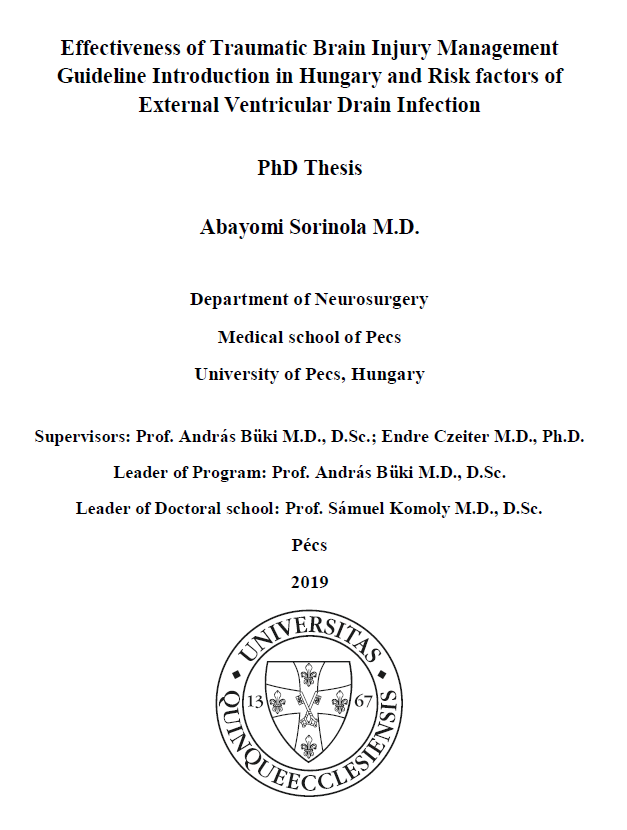Effectiveness of Traumatic Brain Injury Management Guideline Introduction in Hungary and Risk factors of External Ventricular Drain Infection
Abstract
Traumatic brain injury (TBI) is a major cause of death and disability in the world harbouring significant public health and socio-economic importance. TBI is estimated to be the primary cause of death and disability among young individuals. Epidemiological data on TBI from the European Union are scarce, but do indicate an incidence of hospitalized TBI of approximately 235/100 000/year, although substantial variation exists between European countries. The disease burden of serious intracranial trauma is continuously high in Hungary especially among middle aged men representing the leading cause of death in the young, active population. The reported incidence of TBI patients in Hungary is 140/100,000/year. The proportions of mild, moderate, and severe cases are 67%, 23%, and 11%, respectively. The case fatality ratio (CFR) was extremely high in Hungary: the estimated CFR for hospitalized TBI cases was 45% in 2002. To exploit the evidence based guidelines opportunities, the Hungarian Ministry of Health introduced the guideline of TBI care in 2006, which was established on recommendation of Brain Trauma Foundation and it focused on the prehospital and clinical management of patients. Ventriculostomy is frequently used in the management and monitoring of intracranial pressure (ICP) in severe TBI patients. In the US, an average of about 20,586–25,634 (24,380) patients per annum undergo ventriculostomy.
The application of external ventricular drain (EVD) is a crucial point in TBI protocols; EVD infections are among the complications for EVD application with high influence on the outcome of the underlying disease and are not well characterized. EVD infection rate ranges from 0% to 22% resulting in a significant increase in cost, hospital stay, morbidity and mortality.
In order to avoid EVD infection and reduce cost, EVD application is often avoided despite the fact that EVD application can improve the prognosis of TBI patients. Unfortunately the avoidance EVD application can be supported by the EVD infection related uncertainties. The cases where the fear of infection is justified (and the intention of saving resources and reducing cost is acceptable) cannot be differentiated from cases where the risk of EVD infection is acceptably low (and the resource saving jeopardizes the patients’ prognosis).
Due to the heterogeneous knowledge on the effectiveness of EVD, uncertainties of EVD application and the infection related complications, further research is required.

